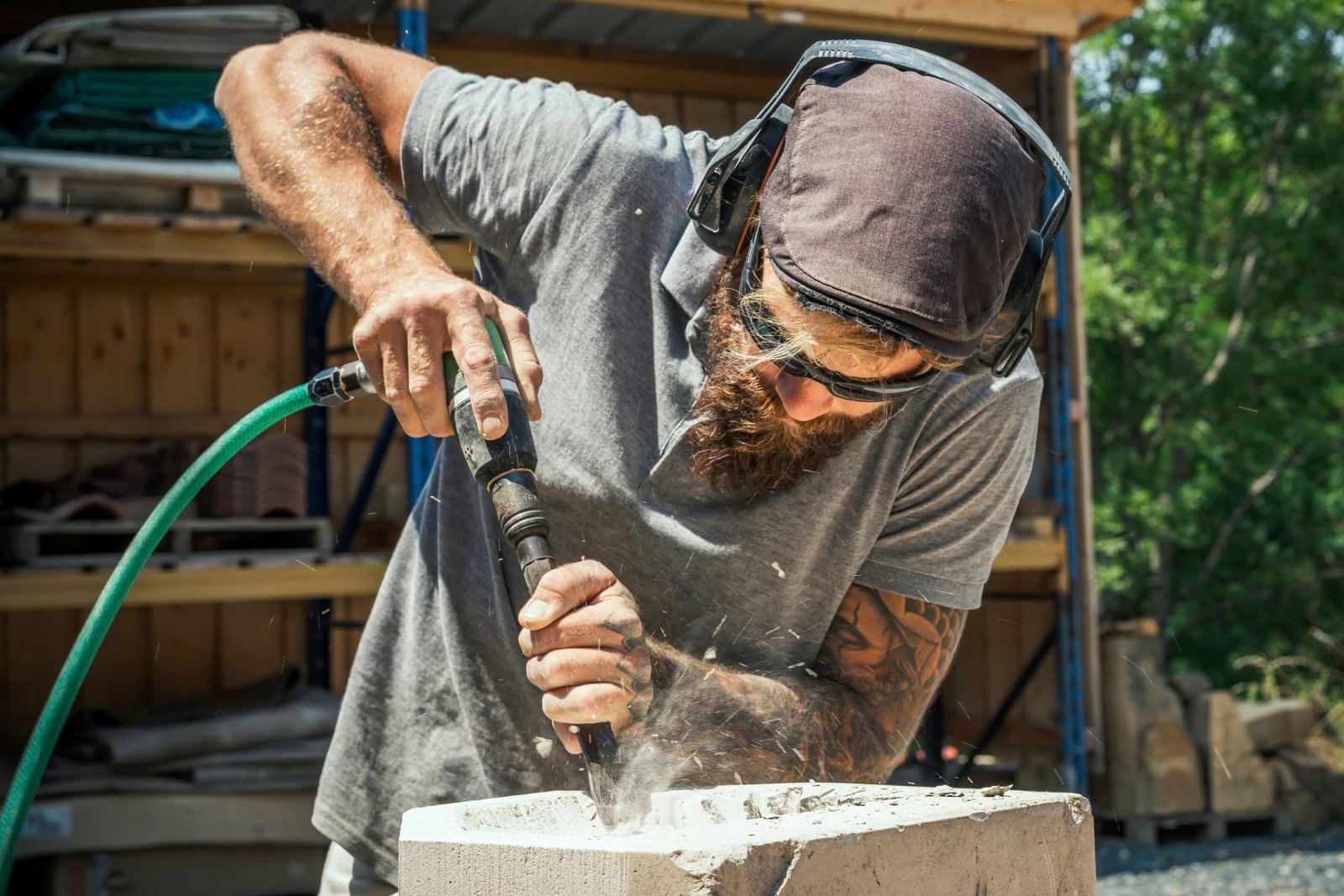
A granite countertop is more than just a kitchen feature—it’s a long-term investment in durability, beauty, and functionality
A granite countertop is more than just a kitchen feature—it’s a long-term investment in durability, beauty, and functionality. Known for their strength and luxurious appearance, granite slabs are a favorite for modern kitchen countertop and bathroom designs. But while granite is incredibly hard and resilient, it’s also a natural stone—and that means it’s porous.
To prevent staining, water absorption, and bacterial buildup, granite countertops must be properly sealed. And just as importantly, they must be resealed on a regular basis. In this guide, we explore how often a granite countertop should be resealed, the factors that influence resealing schedules, and tips to protect your surface for years to come.

Why Granite Countertops Need Resealing
Although granite looks solid, its surface contains tiny pores that allow water, oils, and other liquids to penetrate. When left unsealed, or when the sealant wears off, this can result in:
- Water stains and discoloration
- Etching and dulling of granite countertop colors
- Mold or bacteria growth near sinks and seams
- Long-term surface damage requiring granite countertop repair
To prevent this, a sealant is applied during or after countertop installation. The sealant fills the pores of the granite slab, creating a barrier against moisture and spills.
For more on how sealing works and who’s responsible for it, see:
👉 Who Is Responsible for Applying the Sealant on a Granite Countertop?
How Often Should You Reseal a Granite Countertop?
General Rule:
A granite countertop should be resealed every 1 to 3 years.
However, this timeframe depends on several variables, including the type of granite, its location, how it’s used, and the type of sealant applied.
Key Factors That Affect Resealing Frequency
1. Color and Porosity of the Granite Slab
Not all granite is the same. The density and porosity of your specific stone will greatly influence how quickly the sealant wears off.
- Light-colored granite (e.g., white, beige, or light gray) tends to be more porous. These require resealing every 6–12 months.
- Dark-colored granite (e.g., black, green, or brown) is denser and can go 1.5 to 3 years between resealing.
Ask your stone supplier or fabricator about the porosity of your specific slab during the countertop installation process.
2. Frequency of Use
Heavily used countertops—like those in busy kitchens—are exposed to more:
- Spills
- Cleaning chemicals
- Hot pans and cutting boards
This constant exposure can wear down the sealant faster. If your kitchen countertop is the heart of daily activity, resealing every 12–18 months is recommended.
3. Cleaning Habits
Improper cleaning products can strip away your sealant prematurely. Avoid:
- Vinegar
- Ammonia
- Bleach
- Abrasive sponges
Instead, use pH-neutral granite countertop cleaning solutions. These maintain the integrity of the sealant and reduce the frequency of resealing.
4. Quality and Type of Sealant Used
Not all sealants are created equal. A professional-grade penetrating sealer can last up to 5 years, while a topical sealer may last only 6–12 months.
When choosing a sealant, ensure it’s:
- Food-safe
- Designed for natural stone
- Resistant to water and oil
Signs That Your Granite Countertop Needs Resealing
Here are telltale signs your sealant is wearing thin:
- Water no longer beads up on the surface but absorbs quickly
- Darker spots appear around sinks or near seams
- Stains are harder to remove
- Surface feels rough or sticky after cleaning
- Loss of luster in high-traffic zones
The Water Test:
An easy way to check the seal:
- Pour a few drops of water on different parts of your granite countertop.
- Wait 10 minutes.
- If the water is absorbed and darkens the stone—it’s time to reseal.
How to Reseal a Granite Countertop
Tools & Supplies:
- Granite-safe sealant
- Microfiber cloth or foam applicator
- pH-neutral cleaner
- Gloves and towels
Step-by-Step Instructions:
- Clean the surface thoroughly using a granite-safe cleaner.
- Dry the area completely—moisture can reduce sealant effectiveness.
- Apply the sealant evenly using a cloth or foam applicator.
- Let it absorb for 10–15 minutes, as recommended by the product.
- Buff off any excess with a clean microfiber towel.
- Repeat if necessary for more porous stones.
Where Should You Pay Special Attention When Resealing?
Some areas experience more wear and tear than others. Focus on:
- Sink cutouts and faucet holes
- Edges and overhangs
- Cooktop cutouts
- Seams between slabs
- Backsplash and wall junctions
- High-use work zones
Learn more here:
👉 Where Are the Most Critical Areas to Apply Sealant on a Granite Countertop?
Maintaining Water Resistance Year-Round
Besides resealing, here are daily practices to maintain your countertop’s integrity:
- Wipe up spills immediately
- Use coasters, cutting boards, and trivets
- Avoid harsh cleaners
- Perform the water test every 6–12 months
- Avoid standing water near sinks and seams
With proper care, even light-colored granite countertops can stay stain-free and beautiful for decades.
How Much Does It Cost to Reseal Granite Countertops?
Resealing is a low-cost maintenance step that protects your investment:
- DIY resealing kits: $20–$50
- Professional resealing: $150–$300, depending on surface area
Compare this with granite countertop prices or the cost of repair, and it’s clear resealing is a smart, affordable way to extend the life of your countertop.
Conclusion: Keep It Sealed, Keep It Beautiful
So, how often should a granite countertop be resealed to maintain its water resistance? Every 1 to 3 years, depending on your granite type, usage, and care habits.
Proactively resealing protects against moisture, enhances color, reduces staining, and prevents damage that leads to costly granite countertop repair. By staying on top of your granite countertop maintenance, you ensure your surface remains as functional and elegant as the day it was installed.

